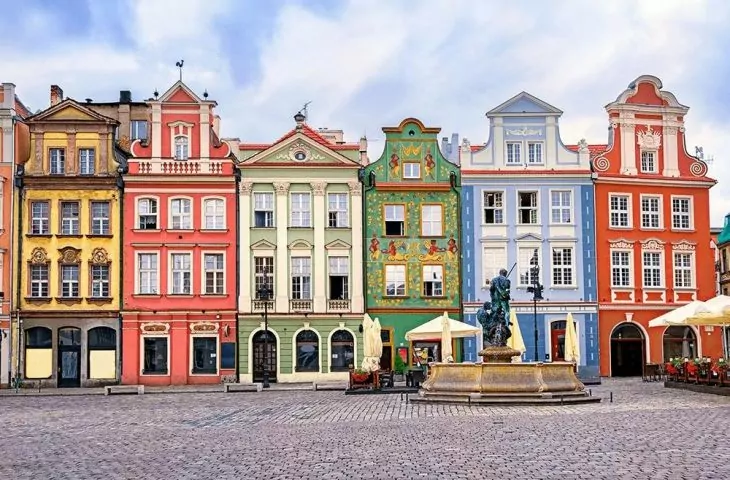Air conditioning in historic buildings what does the preservationist say about it, or is permission always needed?
Luxury apartments and prestigious offices, as well as elegant restaurants in historic buildings, have long experienced a renaissance. Is it possible to combine a love of history with the comfort of modern commercial premises? We suggest in the text on the example of a restaurant in Poznan's Old Town.
fashion for history
Thanks to renovation, spacious and well-lit apartments or business premises in tenement buildings delight with elegance and grandeur. Such are the advantages of living or running a business in a historic building. Not without significance is also the excellent location, usually in the city center. In large cities, hotels or restaurants in the old town attract crowds of tourists.
Costly renovation
What problems do current and future owners of such properties face? If cost is not an obstacle, it is estimated that the renovation of a monument can be up to three times more expensive than the construction of a new property, then it is important to know that owners are not allowed everything. All construction and modernization work requires the approval of the monument conservator. Those planning adaptation, must restore the original shape of the building. As for installations, they are usually replaced without any hassle, and elevators are often installed inside tenements. So what is not allowed?
Air conditioning interference with the appearance of the facade
Interfere with the appearance of the facade, causing a change in the character of the historic building. This is what the preservationist usually invokes when rejecting an application, for example, for the installation of air conditioning, which requires the unit to be mounted outside, usually on the facade or roof. Such an argument can be used by a preservationist even when the premises themselves are not under preservation protection, but are located on a street that is part of an urban-architectural layout listed in the register of monuments. Does this necessarily mean the end of efforts to ensure the comfort of the historic premises? Definitely not! Although not everyone knows this, there are solutions that take into account the specific requirements of conservation protection.
RVF V STAGE system
© Rotenso
air conditioning for historic buildings
Air conditioning is now an absolute standard for office space, and in the case of a catering establishment, even a necessity.
The large number of devices that generate heat, as well as steam generated during the preparation of food, makes it necessary to equip gastronomy premises with a ventilation and air conditioning system as a prerequisite for ensuring stable thermal conditions, necessary on the one hand for the comfort of the people working and staying there, and on the other hand for maintaining the facility itself in good condition. Rotenso's RVF V STAGE system was developed precisely as a solution for the modernization of buildings in compact, historic buildings that do not allow the installation of the unit on the facade or roof," explains Sylwester Stafiej, director of Air Conditioning Systems Rotenso Sp. z o. o.
restaurant in Poznan
The owner of a popular restaurant in Poznan was in just such a situation. The location by the Old Town precluded the installation of an outdoor unit on the facade from the entrance to the premises. In addition, the investor wanted to avoid mounting the unit on the side of the patio, which is a common space, and in spring and summer a place of relaxation for residents of the building and guests of the restaurant. The installation of Rotenso's RVF V STAGE system made it possible to modernize the mechanical ventilation system and to climateize all the rooms intended for consumption with six indoor units, both wall-mounted and cassette units. A supply air system based on an air handling unit equipped with a freon chiller was used to cool the kitchen. The two units necessary for the operation of the system were placed in the technical room, rather than outside. Thanks to the installation, it was possible to achieve an optimum temperature of 22 °C in the premises and avoid the complicated procedures involved in applying for a permit, which the owner of the premises had little chance of obtaining.
RVF V STAGE system
© Rotenso
How does Rotenso's RVF V STAGE differ from a standard system?
By default, every air conditioning system, except for portable air conditioners, consists of an indoor unit, e.g. a room air conditioner distributing cooled and absorbing warm air from the room, which, through copper pipes filled with refrigerant, is fed to a chiller usually located outside the building. The heat supplied to the chiller, as a result of the compression of the refrigerant, is dissipated through the operation of a fan to the outside.
The principle of operation of the Rotenso RVF V STAGE condensing unit intended for monuments is the same as the classic solution with an outdoor condensing unit, with the difference, however, that the unit itself can be placed inside the building, for example, in a technical room, archive, basement or attic. The fresh air needed to carry out the thermodynamic transformation still needs to be brought and discharged to and from the office to the outside. This is what is made possible by the special design of a high-pressure fan that allows air to be transported over a long distance of up to 15 meters," Sylwester Stafiej concludes.
For the outlet of air exchange ducts to the outside, all that is needed is a small opening in the facade, which remains without affecting the aesthetics of the building and can be easily covered with a special grille. The possibility of complete installation of the condensing unit inside the building, connection of ten RVF indoor units and cooperation of the system with air handling units, with a cooling section is therefore an ideal solution for buildings with difficult location.





















